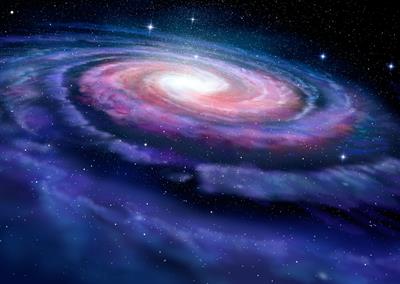PDF chapter test TRY NOW
Our solar system is placed in the galaxy, known as Milky Way.
The term "Milky" has arrived, after all, It looks like a band of light formed by the stars that cannot be differentiated by the normal eye from the Earth. Because it's disk-shaped structure is viewed from inside.
In 1610, Galileo Galilei resolved the band of light into the individual star.
Till 1920s, most astronomers believed that the Milky Way was the one and only galaxy which comprised all the stars in the Universe.
Edwin Hubble found the fact that Milky Way is just one of many galaxies.
The diameter of the Milky Way is over 100,000 light-years. It has the stars ranging from smaller to thousand times larger than the Sun. It incorporates many other celestial bodies of gases, clouds of dust, dead stars, newly born stars, etc. It is also estimated to comprise at least 100 billion stars.
Andromeda is the galaxy that is closest to our Milky Way.

- The Milky Way is continually revolving.
- Our solar system is located about 27,000 light-years away from the galaxy's centre.
- Average speed of our solar system is 828,000 km/h.
- The solar system would take about 230 million years to travel around the Milky Way.
- It is estimated that the Milky Way contain 100 - 400 billion stars and planets.
Important!
When the solar system was ideal, there were no humans, no Himalayan mountain on Earth and maybe the dinosaurs roamed around the Earth.

The Milky Way, similar to most of the other galaxies are considered to have a black hole in their centre. We can not directly see these black holes, but scientists recognize them based on the change in the materials' path due to their gravitational effects.
